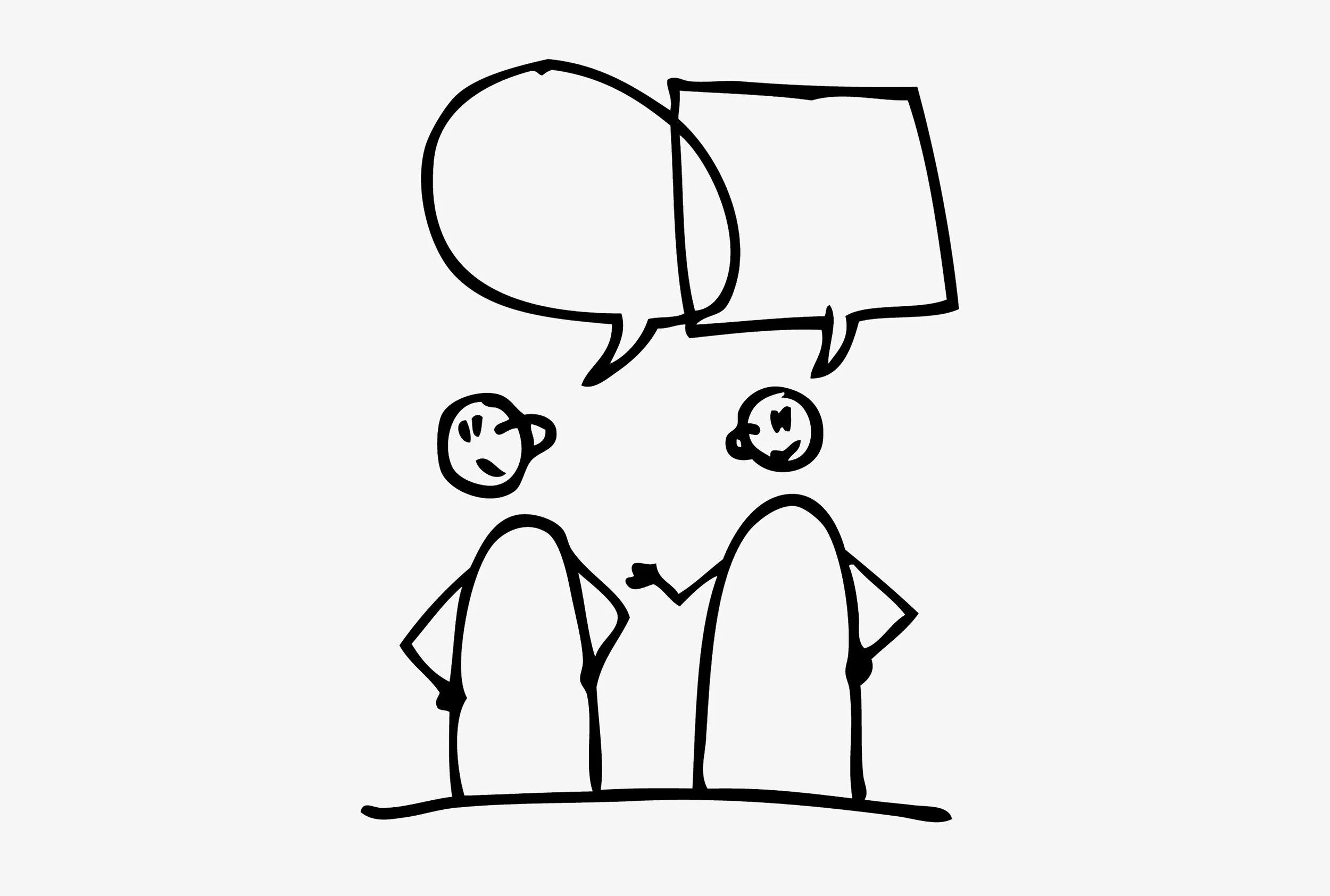Singing Happy Birthday on Zoom
Have you tried to do this over the last nineteen months? What did you notice?
I've also tried Zoom Karaoke. What seems to happen is that the song slows down, more and more. We're all slightly out-of-synch online, and we try to get back in synch. It's a polite act - we try not to speak over each other too much in person. Online, we hesitate and try to match the group. The result is an off-kilter cadence that gets slower and slower until it just doesn't feel right.
Conversations are shaped by the space they take place in - just like a long, formal boardroom vs a set of beanbags around a whiteboard set different tones.
The internet is shaping our conversations, changing the fundamentals of how they function.
Know your Conversation Design Facts
Do you remember learning your multiplication tables? My teacher back then called these "Math Facts". Memorizing what 4 times 6 equaled would just make your life easier, rather than doing the math manually, each time.
Alas, I never seemed to get the hang of my 12-times tables.
I have a short list of Conversation Facts. I gathered these as I prepared to write Good Talk: How to Design Conversations that Matter. These facts matter, because they help me, and can help you, understand the limits of the material we're designing with. Just like you can't make clay act like steel, Conversation has parameters and limits.
Here's a few numbers to remember:
200 milliseconds. That's the general, global average, expected pause between when one person finishes speaking and another person starts. That's the space between a starter pistol going off and a sprinter starting to run. Longer pauses can be interpreted as "overthinking."
600 milliseconds. That's how long it takes a brain to formulate a reply. You may notice a 400 millisecond gap in those facts! Having the ability to say "that's a great question...I have a few thoughts on that" can buy your brain some time to catch up.
125 words per minute. That's how quickly we can speak, and express our thoughts.
4000 words per minute. That's how quickly we can think. Some research estimates the rate at only 900 words/minute...but in any case, the facts are clear: We can't *ever* express everything that's on our minds!
The 200/600 and 125/4000 gaps are *both* good reasons to have Active Listening skills in your front pocket, at the ready. Active Listening can help us slow a conversation down and make sense of it, both for ourselves, and our conversation partners.
Speaking of making sense:
120 bits/sec: Is your attention bandwidth. That's how much information you can "take in" at any one time.
60 bits/sec is one person talking. In "real life" we use slight differences in volume to filter out sounds. It's how we can still (mostly) hold a conversation at a noisy bar or cocktail party. Online, we have only a limited ability to do this. On Zoom or teams, all voices have the same volume, which can make an unstructured conversation feel pretty overwhelming, pretty fast.
Spatial Audio interfaces are emerging (I'll share links to a few I've tried below) but they can be challenging for folks to use for day-to-day meetings or workshops - and they don't always meet standards of security and accessibility that many orgs require.
Spatial Audio
The cocktail party effect is discussed here. A few online spaces that make use of this effect are Cozy Room and KumoSpace. Cozy Room is interesting because it's audio-focused, and you can "look" in a direction to focus on a sound. In KumoSpace you are a tiny thumbnail video, and can move around, like in a video game and have a radius around your avatar that you can hear within.
Have you tried any others that you like? If you have, drop me a line on LinkedIn and share your favorites!
PS:
Join me every month for intentional practice and community support, through the Conversation Factory Insiders group. You'll get access to a monthly practice and reflection session, my book club, and discounts on my workshops.
When you subscribe, you'll also get an invite to the Conversation Factory Book Club. Check out the first edition here.
I also have a free course on exploring and expanding your roles as a facilitator, which includes over 40 essays on some of the most impactful modes of showing up with a group. Sign up here.
Check out the latest episode of my Podcast here. It's all about Doing vs Experiencing Design Thinking, with Professor Jeanne Liedtka.
